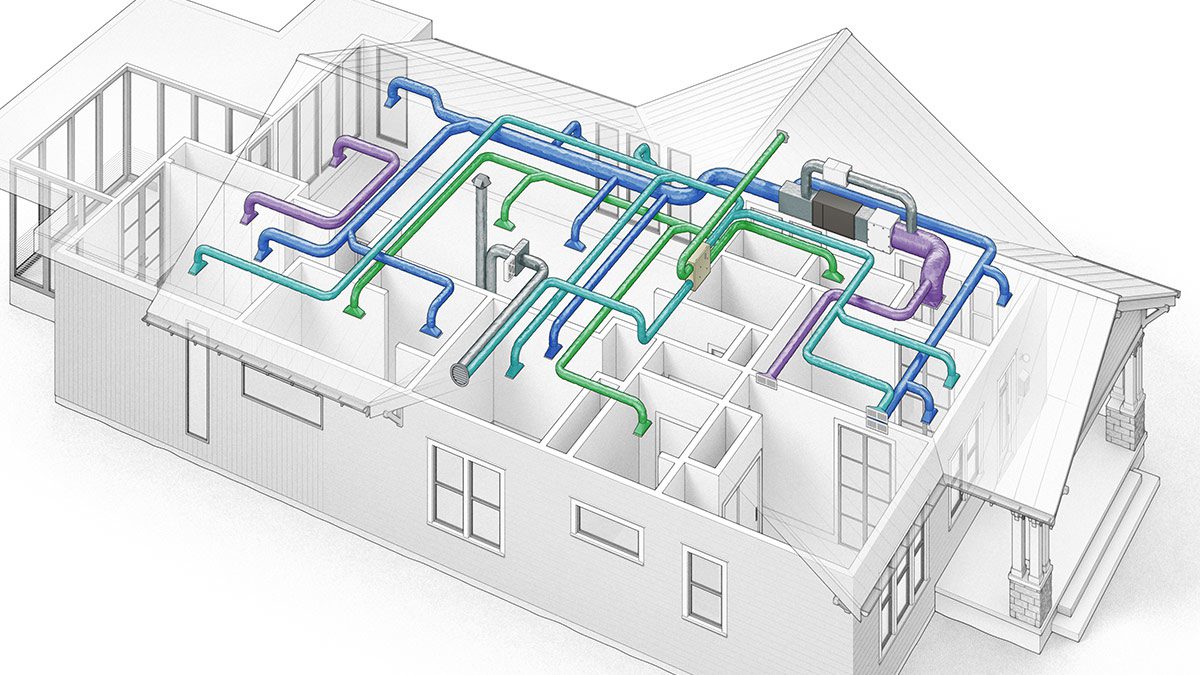A Restaurant Architect is someone who is skilled in designing restaurants and high-visibility real-estate properties. In this era of advancement,

If you are looking for a way to optimize the heating, ventilation and air conditioning (HVAC) system of your commercial building, you may want to consider variable refrigerant flow (VRF) systems. VRF systems are a type of HVAC system that can provide simultaneous heating and cooling to different zones of a building, using a single refrigerant circuit. VRF systems can offer many benefits for HVAC design and MEP design, such as energy efficiency, flexibility, comfort and reliability. In this blog post, we will explain what VRF systems are, how they work, and how they can improve HVAC design and MEP design for commercial buildings.
VRF systems are also known as variable refrigerant volume (VRV) systems. They are a type of HVAC system that use refrigerant as the cooling and heating medium, instead of water or air.
VRF systems consist of three main components: an outdoor unit, indoor units and a control system. The outdoor unit is the central component of the system. It contains one or more compressors that can modulate the refrigerant flow according to the demand of the indoor units. The outdoor unit is connected to the indoor units through refrigerant piping. The indoor units are the devices that provide heating or cooling to the different zones of the building. They can be wall-mounted, ceiling-mounted, floor-standing or concealed in the ceiling or floor. The indoor units can vary in size and capacity, depending on the needs of each zone. The indoor units can operate independently from each other, allowing for precise temperature control in each zone. The control system is the interface that allows the user to monitor and adjust the operation of the system. The control system can be centralized or decentralized, depending on the preference of the user. The control system can also provide diagnostic information and maintenance alerts.
VRF systems work by varying the amount of refrigerant that flows through the system, depending on the heating or cooling demand of each zone. The outdoor unit can adjust the speed and direction of the compressor, allowing for variable refrigerant flow.
The indoor units can also adjust the opening of their expansion valves, allowing for variable refrigerant volume. There are two main types of VRF systems: heat pump systems and heat recovery systems. Heat pump systems are simpler and more common. They can provide either heating or cooling to all zones at a time, but not both simultaneously. Heat pump systems are suitable for buildings that have similar heating or cooling needs in all zones, such as offices or hotels.
Heat recovery systems are more complex and more efficient. They can provide simultaneous heating and cooling to different zones at a time, by transferring heat from one zone to another. Heat recovery systems are suitable for buildings that have diverse heating or cooling needs in different zones, such as hospitals or schools.
VRF systems can offer many advantages for HVAC design and MEP design for commercial buildings, such as:
– Energy efficiency: VRF systems can reduce energy consumption by up to 40% compared to conventional HVAC systems, according to some studies. This is because VRF systems can modulate the refrigerant flow according to the load, avoiding unnecessary energy waste. VRF systems can also recover heat from one zone to another, reducing the need for additional heating or cooling sources.
– Flexibility: VRF systems can adapt to different building layouts and configurations, as they do not require ductwork or large mechanical rooms. VRF systems can also accommodate changes in occupancy or usage patterns, as they can provide individual temperature control in each zone.
– Comfort: VRF systems can provide consistent and precise temperature control in each zone, enhancing the comfort of the occupants. VRF systems can also reduce noise levels and improve indoor air quality, as they do not rely on fans or air handlers.
– Reliability: VRF systems can reduce maintenance costs and downtime, as they have fewer moving parts and less risk of leaks or corrosion. VRF systems can also detect and isolate faults automatically, minimizing the impact on the system performance.
If you are interested in installing a VRF system in your commercial building, you will need a professional HVAC design and MEP design service provider. InnoDez Design and Engineering is a company that provides MEP design and engineering services for various types of projects, including commercial buildings. We have extensive experience and expertise in designing and installing VRF systems, as well as other HVAC systems. We can help you choose the best VRF system for your building, based on your budget, preferences and requirements. We can also provide you with the necessary drawings, calculations, permits and inspections for your project. Contact us today to get a free quote and consultation for your HVAC design and MEP design project.
About Author
InnoDez